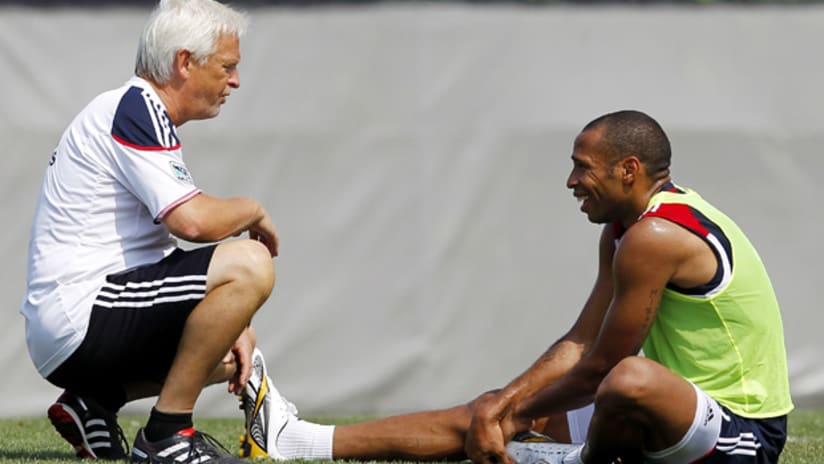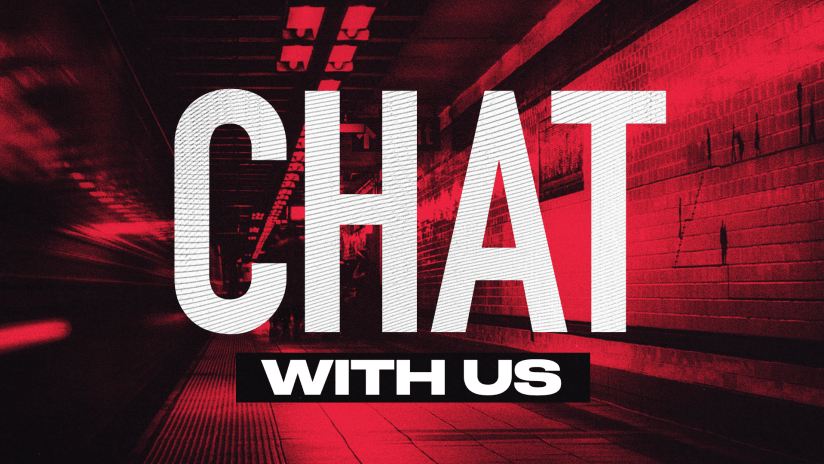The big DP wave of 2010 is adding to the coaching burden at more than one MLS address.
Ownership is making significant investment when it pays the freight for talented imports like Thierry Henry, Rafa Márquez, Freddie Ljungberg and others. There is obviously pressure on the players to produce. But there is also significant pressure on the managers, who must identify the optimum deployments of these high-dollar men.
It’s a critical assignment. Put a figure like Henry, with his brilliant combination of talent, speed and smarts, in the right spot and your team stands to reap fabulous rewards. Put him in a spot less perfect and you might get 70 cents on the dollar, so to speak, in terms of production. Granted, Henry at 70 percent of full ability is still worth the price of admission. But why settle for seven-10ths of the man when you can get the full Monty?
So Hans Backe is on the spot, and it’s a double whammy. He has to simultaneously determine how best to use Henry and even newer DP Márquez.
In two starts so far, Henry has lined up alongside Juan Pablo Angel at forward in a 4-4-2. Ángel does a little more of the work, moving around to look for balls out of midfield and then looking to scurry into useful spots near goal. Meanwhile, the French international works in shorter bursts, drifting about the channel between defenders and midfielders. From there, he looks for balls his clever Colombian strike partner initially picks up, or looks to make dashing runs that Márquez may spot.
Henry had to leave just before intermission with a slight groin strain Sunday in Chicago, so we didn’t see him adjust to the game as he did a week ago in Houston. On that occasion, Henry originally played a little closer to goal but gradually recognized the space that seemed to be available on the night: a little further back toward midfield and slightly left in the attack.
Presumably, he’ll move about as matches progress as he did two weeks ago, scanning for the accessible areas du jour.
Márquez will play a central midfield role, apparently. Still, there are choices to make in determining his precise role and how to align the pieces around the Mexican National Team captain. Márquez played in a deep holding role Sunday, remaining a little more stationary than he may in coming games as fitness and familiarity with others around him improves.
Even when fitness improves, he seems unlikely to scurry about, far less apt to make wide runs or late sprints into the penalty area the way Joel Lindpere did previously. So for Márquez, Sunday’s pairing with promising rookie Tony Tchani seemed helpful, as the youngster’s fresh legs subtracted some of the burden of running from Márquez.
Rather, the Mexican veteran could focus more on starting the offense from his spot. And he was superb in that role, scattering the kind of early passes that can unlock defenses before they get organized. It looked a lot like the way Shalrie Joseph plays early balls out of midfield for New England, although Márquez was doing it even earlier and from deeper positions, occasionally to devastating effect.
You wonder if Márquez might be best suited for a deep holding role in a 4-1-4-1, the way Dallas uses 34-year-old Daniel Hernandez. Some combination of Henry, Tchani and Lindpere (who moved out to the left against Chicago) playing in front of Márquez seems intriguing. Then again, part of the stability that Backe (finally!) brought to the New York club comes from dependably deploying a highly-structured 4-4-2, so perhaps a wholesale team tactical adjustment isn’t the way to go.
None of this is easy. Sigi Schmid, when he was with Columbus, needed a full season to get a handle on how best to deploy Guillermo Barros Schelotto (who wasn’t an official DP back then but did later become one, officially, for one season). And look at Ljungberg’s time in Seattle, when the Swedish attacker was shuffled throughout positions in the attacking third for most of his time at Qwest Field.
Ljungberg spent time as a wide midfielder, as an attacking midfielder at the top of a diamond and as a second forward behind a target man. The inability to identify his best spot in the Sounders’ scheme contributed to his unsettled status, which eventually led to Ljungberg’s move east to Chicago.
So now it’s up to Fire boss Carlos de los Cobos to sort it out. Ljungberg, in his starting debut at Toyota Park, lined up as a second forward behind Brian McBride, the consummate target presence.
It didn’t seem to work, however. Ljungberg was involved with just about every moment of danger Chicago’s offense could produce, so it’s not like he was completely ineffective. And he was perhaps an unlucky bounce away from scoring brilliantly on a great run and a dead-eye pass from McBride. Still, he’ll need to do more going forward. One good chance that went begging and a smattering of half chances just won’t be enough when playing at home.
And at some point, as fellow Fire DP Nery Castillo gets his game legs beneath him, de los Cobos will have to factor both players’ best usage into the big equation. That will complicate the coach’s quest to maximize effectiveness of the two pricey new Toyota Park toys.
These are big choices. This is where the bosses earn their money.





